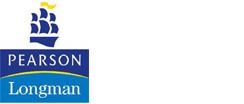Linear programming
This unit from the Continuing Mathematics Project is about linear programming - a procedure which is used widely in industry to solve management problems. The work here is an introduction to the subject.
There are no really new mathematical techniques in the unit. It is rather an amalgamation of things students have probably learnt already - particularly about representing straight lines and inequalities on graph paper.
The main aim of the unit is to help students to apply their knowledge of linear inequalities involving not more than two variables (x and y) to the solution of problems of the type where the maximum, or the minimum, value of some combination of the variables of the form ax + by has to be found.
This specifically involves:
(i) identifying the variables in the problem;
(ii) identifying the constraints on these variables and expressing them as inequalities;
(iii) illustrating on coordinate axes the set of points which corresponds to permissible choices for x and y;
(iv) realising that the maximum or minimum value of the combination of x and y will occur at a vertex of the polygon within which x and y are confined;
(v) solving the problem by finding x and y at the critical vertex, or by finding the coordinates of the point nearest to the critical vertex, if x and y must be whole numbers.
Show health and safety information
Please be aware that resources have been published on the website in the form that they were originally supplied. This means that procedures reflect general practice and standards applicable at the time resources were produced and cannot be assumed to be acceptable today. Website users are fully responsible for ensuring that any activity, including practical work, which they carry out is in accordance with current regulations related to health and safety and that an appropriate risk assessment has been carried out.





